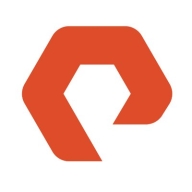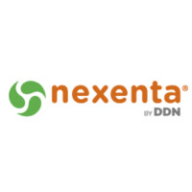


Red Hat Ceph Storage and Nexenta are enterprise storage solutions. Red Hat Ceph Storage seems to have the edge in pricing and customer support, while Nexenta is noted for its advanced features.
Features: Red Hat Ceph Storage offers scalability, extensive integration capabilities, and a flexible architecture. Nexenta is known for its software-defined storage capabilities, advanced analytics, and comprehensive feature set.
Ease of Deployment and Customer Service: Red Hat Ceph Storage features a streamlined deployment and responsive customer service. Nexenta focuses on customization in deployment, which may extend setup time, with generally competent support.
Pricing and ROI: Red Hat Ceph Storage offers competitive pricing with minimized setup costs and quick ROI. Nexenta involves a higher initial investment but offers substantial long-term benefits, suggesting higher potential ROI over time.
| Product | Market Share (%) |
|---|---|
| Red Hat Ceph Storage | 18.4% |
| Pure Storage FlashBlade | 4.1% |
| Nexenta | 1.4% |
| Other | 76.1% |



| Company Size | Count |
|---|---|
| Small Business | 11 |
| Midsize Enterprise | 11 |
| Large Enterprise | 21 |
| Company Size | Count |
|---|---|
| Small Business | 13 |
| Midsize Enterprise | 4 |
| Large Enterprise | 15 |
FlashBlade is the industry’s most advanced scale-out storage for unstructured data, powered by a modern, massively parallel architecture to consolidate complex data silos (like backup appliances and data lakes) and accelerate tomorrow’s discoveries and insights.
We monitor all Software Defined Storage (SDS) reviews to prevent fraudulent reviews and keep review quality high. We do not post reviews by company employees or direct competitors. We validate each review for authenticity via cross-reference with LinkedIn, and personal follow-up with the reviewer when necessary.